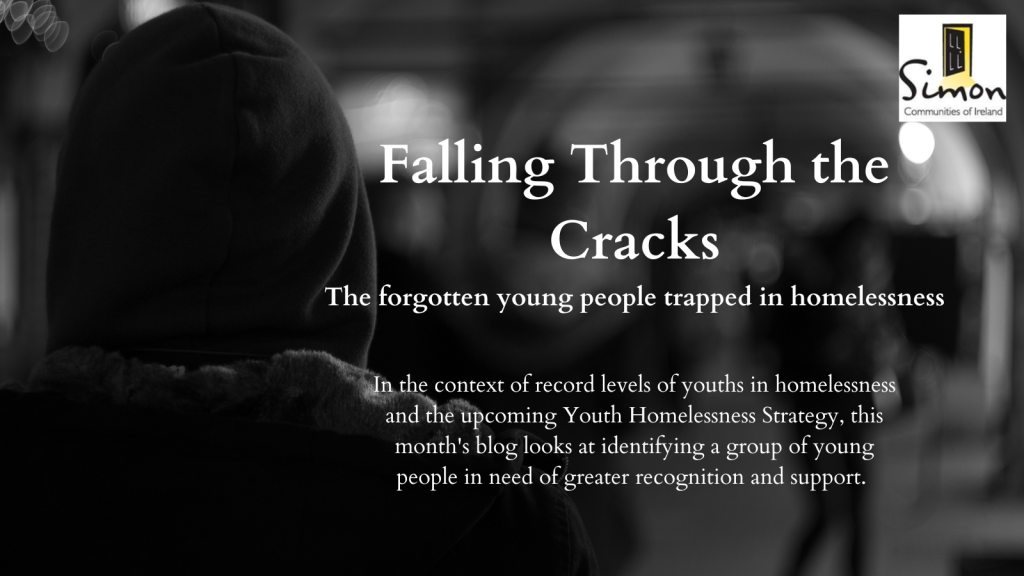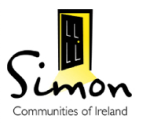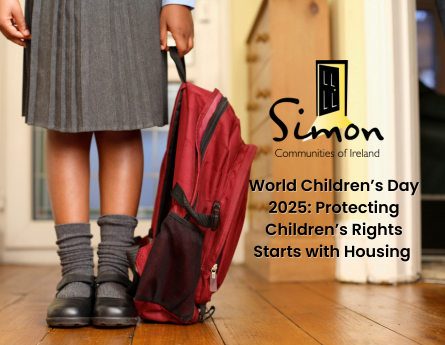Author: Anna Marie Bourke

This month’s blog examines a specific cohort of young people who are falling through the gaps in terms of homeless policy and support. Here’s what you can expect:
- An overview of youth homelessness
- Identifying a vulnerable group of young people falling through the cracks
- Policy changes needed to lift this group out of homelessness
Overview of Youth Homelessness
Youth Homelessness is on a worrying upward trend in 2022. In less than a year, the number of people aged 18-24 in homelessness has increased by 67.8% from 733 in April 2021 to 1,230 in March of this year. 1,230 is the highest number of young people living in emergency homeless accommodation ever recorded by the Department of Housing.
Some Young People Are Falling Through the Cracks
SCI is a member of the National Homeless Action Committee (NHAC)[1] which, at present, is focusing on:
- Homelessness Prevention, and
- Developing a Youth Homelessness Strategy as committed to within Housing for All[2]
While developing our Youth Homelessness submission – and in subsequent conversations with stakeholders and the Department – it became clear that young people who experienced household disruption as a child or teenager, but never officially entered the care system, were often marginalised or even forgotten in the discussions around youth homelessness.
Included in this cohort are young people who became known to Tusla due to welfare concerns – likely because they experienced family breakdown in their teens – but did not officially enter care. It is possible they ‘aged out’ of the system before the chance for real support was developed, or circumstances at the time were not deemed to be at a level of risk that warranted significant intervention.
The concern here is that this group is – to a certain extent – considered to be unknown or ‘invisible’. There is little to no research on the group, especially in an Irish context, and there appears to be less awareness of their needs, which we fear is compounding the issue. However, the Simon Communities are encountering these young people nearly every day, particularly in our dedicated Youth Service in Galway Simon. Here, while two-thirds of young people receiving housing support have come from a care background; the remaining third fall into this category of young people that ‘aged out’ of the system before they could receive meaningful supports.
These young people often require just as much support as care-leavers, but they are falling through the cracks in our social support system making them vulnerable to homelessness, poverty, and educational disadvantage:
- These young people do not have access to social support similar to that provided those in aftercare (which prepares young people for the transition into adult life with tailored supports);
- they often receive a lower social welfare rate which compounds their experience of poverty and can trap them in homelessness;
- They can often end up in hidden homelessness situations.
- They are not entitled to housing support or targeted homelessness prevention such as CAS for care leavers;
- They are not entitled to educational supports for children in care and aftercare such as the Tusla and DCEDIY Bursary Scheme to young adults aged between 18 and 30 who have had a care experience of at least 6 months.
What needs to be done: Policy changes
Because this group is not as easily identified as others, tackling homelessness here would need a whole-of-government integrated approach with input from the Department of Housing, Department of Social Protection, Department of Children, Equality, Disability, Integration and Youth, and more.
Action is needed to ensure these young people have access to meaningful supports and ultimately be able to live independently.
Identify this group within the upcoming Youth Homelessness Strategy: Both in our written submissions and subsequent meetings with the Department of Housing, the Simon Community have called for this cohort of young people to be named and identified as a vulnerable group within the upcoming Youth Homelessness Strategy.
Ensure targeted homeless prevention measures for this group: These young people need access to a level of support available to those who entered State care. Ensuring a key worker is available who can provide support into early adulthood would be a great place to start who will support them with the skills needed to manage living independently. Existing homeless prevention policies such as CAS for care leavers could be expanded and adapted to be more inclusive of all young people at risk of homelessness. A housing-led approach for this vulnerable cohort should be ensured.
Improved Social Welfare: The Department of Social Protection needs to revisit social welfare payments and minimum wages should be benchmarked to meet the minimum essential standards of living as an anti-poverty measure, and the social welfare rate for all young people under the age of 25 be increased. The rate current is €112.70 for a young person under the age of 25.
[1] More information about NHAC can be found here: https://www.gov.ie/en/publication/aad47-national-homeless-action-committee/
[2] Objective 1.15: https://www.gov.ie/en/publication/ef5ec-housing-for-all-a-new-housing-plan-for-ireland/


